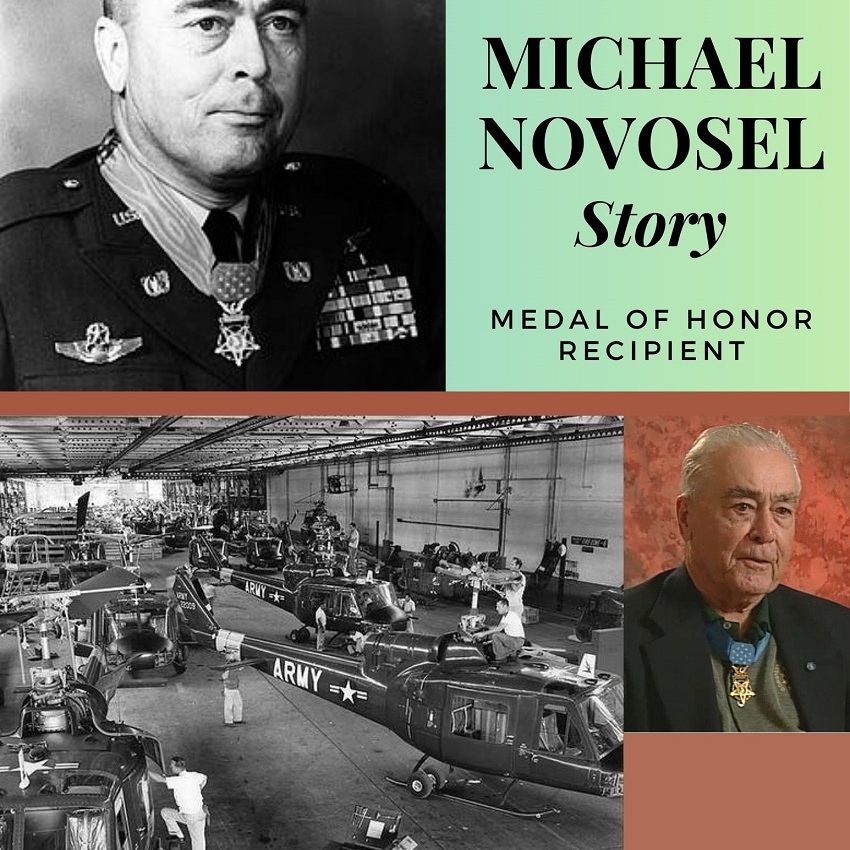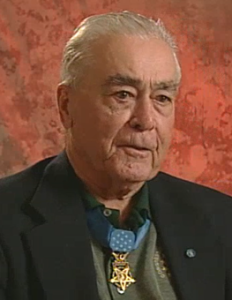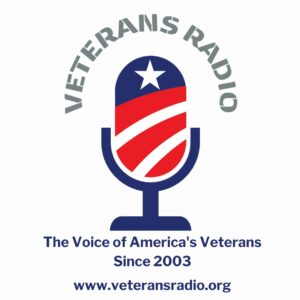Michael Novosel
Medal of Honor Recipient

The story of Michael J. Novosel, Sr. is not about rank or medals but about the desire to fly and serve. He was a kid of 19 when he joined the Army Air Corps and 62 years old when he finally retired from the US Army. Novosel lived a life in service and in flight before passing away in 2006 at the age of 83.
Early Life

Courtesy: WikiMedia Commons
Novosel, the son of Croatian immigrants, was born on September 3, 1922, and grew up in Etna, Pennsylvania, a small borough near Pittsburgh. His parents, like many immigrants of their time, sought a better life in America, and their experiences undoubtedly shaped Michael's upbringing.
Growing up in a working-class community during the Great Depression, young Michael learned the values of hard work and perseverance. He attended Etna High School. It was during these formative years that he met Ethel Mae Graham, who would later become his wife. Their relationship began in their youth and would endure through decades of challenges and triumphs.
His early life in Pennsylvania, set against the backdrop of a bustling industrial region and the economic hardships of the era, would have instilled in him a sense of resilience. This resilience would become a hallmark of his character, evident in his remarkable military career that spanned three wars and saw him return to service voluntarily for the Vietnam War, long after many of his contemporaries had retired. The decision to enlist in the Army Air Corps at the age of 19 in 1941, even before the United States formally entered World War II, speaks to an early sense of duty and a desire to serve. Novosel's story is not one of privilege, but hard work by a first-generation American.
Everyone is a product of their family upbringing and early life exposure to their surroundings. Etna's local history includes a proud reference to George Washington's early days. Etna's humble beginnings can be traced back to the early 1740s, when George Washington almost met his demise at the hands of the Seneca Indians while surveying the land for the Virginia Land Company. As the Native Americans were pushed out of the area, the construction of Pittsburgh Freeport Road and the Pennsylvania Canal brought many immigrants to the area. The canal created a boom town between 1826 and 1868, bringing all kinds of industry, including steel and the Etna Iron Works. This area and the industry work were ripe for an influx of European immigrants. In the 1920-30s, Etna had a population of around 7,500. Today, it is half that size as the industry has moved on.
Michael Novosel Sr. had four brothers and a sister. Growing up during the Great Depression, Novosel's childhood was marked by the economic hardships prevalent across the nation. Despite these challenges, he did well in school and graduated from high school in 1940. His upbringing had instilled in him a strong work ethic and a deep sense of patriotism.
US Army Air Corps & World War II
At the age of 19, Novosel made the pivotal decision to join the U.S. Army Air Corps. His initial aspiration was to fix and fly aircraft. However, as he detailed in his memoir, "Dustoff: The Memoir of an Army Aviator," The Army initially had other plans, assigning him as the chief pay clerk in his unit. Undeterred, he researched the Air Corps cadet program, seeking admission. The bombing of Pearl Harbor accelerated his path, and he was sent to Kelly Field in Texas for flight school. This marked the beginning of an extraordinary military aviation career that would span three wars and earn him the nation's highest award for valor.
The US Army Air Corps was the hottest new thing in the early 1940s. While aircraft were utilized in World War I, the use of aircraft had advanced, and they were now tactical fighter resources and not just for reconnaissance. The Air Corps became known as the Army Air Force (AAF). A remarkable expansion occurred during World War II; the AAF became the world's most powerful air force from the Air Corps of 1939, with 20,000 men and 2,400 planes, to the early autonomous AAF of 1944, with almost 2.4 million personnel and 80,000 planes. Major General Henry (Hap) Arnold presided over an increase greater than for either the ground Army or the Navy, while at the same time dispatching combat air forces to the battlefronts. General Arnold held the ranks of General of the Army and later, General of the Air Force. Arnold was an aviation pioneer, with flight instructions connected to the Wright Brothers. He was Chief of the Air Corps (1938-1941) and the only United States Air Force general to hold a five-star rank, and the only officer to hold a five-star rank in two different U.S. military services.
At the time, many young men wanted to fly. Novosel was caught in the allure of the newest flight technology. In many ways, his rise mirrored that of Army Aviation itself. He rose to the rank of captain at the age of 23, flying B-29 Superfortress bombers, the size of modern 737 passenger planes. The B-29 Superfortress was a large, four-engine propeller-driven heavy bomber, crucial in the Pacific theater. It was known for its advanced technology and long-range capabilities, which were essential for bombing missions over long distances. Novosel's role as a B-29 pilot placed him in a critical position, participating in strategic bombing campaigns against Japanese targets. These missions were often perilous, subjecting aircrews to anti-aircraft fire and the risk of enemy fighter attacks.
Following his service in World War II, he was assigned to Eglin AFB, Florida, where he was a B-29 test pilot. After World War II, there was a reduction in military personnel, and Novosel left active service in 1949 and joined the Air Force Reserve.
US Air Force Reserve & Korean War
He settled in Fort Walton Beach, Florida, with his family. However, the outbreak of the Korean War prompted him to return to active duty with the Air Force. Novosel, then a Major, was assigned to a non-combat role. Instead of being sent into aerial combat, he attended the Air Command and Staff School at Maxwell Air Force Base, Alabama. Therefore, there are no records of Mike Novosel flying specific missions in Korea, as his role during that conflict was focused on professional military education rather than combat operations. After his service in the Korean War, he left active duty again in 1953 and was promoted to the rank of Lieutenant Colonel in the Air Force Reserve.
Novosel never wandered too far from military aviation. In fact, making his home in Fort Walton Beach is evidence of wanting to hear and be near the action. The economy of Fort Walton Beach is driven by two primary factors: tourism and the military. There are two major Air Force bases that border Fort Walton Beach: Hurlburt Field is home to Headquarters, Air Force Special Operations Command (AFSOC), the 1st Special Operations Wing, and the Joint Special Operations University. The area is also home to Eglin AFB, geographically one of the largest Air Force bases at 724 square miles, and thus home to joint exercises, missile, and bomb testing.
Flight was central to his life. Novosel was a civilian commercial pilot for Southern Airways during his time as a civilian pilot. Southern Airways had a significant history in the US aviation industry, starting in 1949 as a scheduled airline serving the Southeast, and later merging with North Central Airlines in 1979 to form Republic Airlines. Republic Airlines then merged with Northwest Airlines in 1986. Northwest Airlines merged with Delta Air Lines on October 29, 2008.
US Army CWO in Vietnam
Despite being a senior civilian airline pilot, when the war in Vietnam started, Novosel applied again for active duty. However, the only thing that the USAF was willing to give reserve lieutenant colonels like Novosel to fly was a desk. Resigning his commission, he approached the Army, which decided that flying dustoffs (medevac helicopters) in Vietnam was a perfect job for this seasoned aviator. In 1963, at the age of 41, Novosel made the extraordinary decision to join the Army as a Warrant Officer. He completed flight school at Fort Wolters, Texas, and Fort Rucker, Alabama. He would later be promoted to Chief Warrant Officer (CW4) during his distinguished service in Vietnam.
For the uninitiated, CWOs were the backbone and "doers" of Army aviation in Vietnam. Their willingness to take on the most dangerous missions, combined with their extensive knowledge and commitment to their craft, made them an indispensable component of the U.S. military effort in the conflict. The dramatic increase in the number of aviation warrant officers from roughly 2,900 in 1966 to over 12,000 by 1970 underscores their central importance to the airmobile warfare that defined the Vietnam War. CW4s were often the seasoned veterans who mentored junior pilots, both newly minted warrant officers and commissioned officers. Their deep well of experience in everything from instrument flight in monsoon conditions to handling aircraft emergencies made them invaluable instructors and mentors within their units.
During his service in the Vietnam War, CWO Michael Novosel flew the Bell UH-1 "Huey" helicopter for his "Dustoff" medical evacuation missions. The UH-1 Huey was the ubiquitous workhorse of the U.S. Army during the conflict, and its use as an air ambulance was critical for saving countless lives. In his role as a Dustoff pilot, Novosel flew this specific type of helicopter into the most dangerous situations to rescue wounded soldiers. Over his two tours in Vietnam, Michael Novosel logged an astonishing 2,543 combat flight hours. This extensive time in the air is a testament to his relentless dedication and the sheer number of dangerous missions he undertook. He is credited with the evacuation of 5,589 wounded GIs.
Sons often follow in their dads' footsteps in the military. The Novosels took it to a whole new level. Both father and son flew Dustoffs in Vietnam at the same time. Ultimately, they would rescue each other. In one routine flight, Mike Jr. was shot down. Mike Sr. was returning from a mission when he heard that his son had gone down. A simple detour later, and Mike Jr. was rescued without incident. Mike Jr.'s wounds were minimal, and he was up and flying in a few days. Less than a week later, however, Mike Sr. was shot down himself. His tail rotor was torn off, and Mike Sr. went down in a rice paddy. As fate would have it, Mike Jr. was out and ready to take the call. He quickly came to his father's aid and pulled him out; the father-son duo is credited with evacuating more than 8,000 wounded soldiers.
Medal of Honor
In a four-decade career in military aviation, Novosel is remembered most for his actions in 1968. On the morning of October 2, 1969, Novosel set out to evacuate a group of South Vietnamese soldiers who were surrounded by several thousand North Vietnamese light infantry near the Cambodian border. Radio communication was lost, and the soldiers had expended their ammunition. Without air cover or fire support, Novosel flew at low altitude under continuous enemy fire. He skimmed the ground with his helicopter while his medic and crew chief pulled the wounded men on board. He completed 15 hazardous extractions, was wounded in a barrage of enemy fire, and momentarily lost control of his helicopter, but when it was over, he had rescued 29 men. He stayed in the country and completed his second tour in March 1970.
In 1971, President Richard Nixon presented Michael Novosel the Medal of Honor, the nation's highest award for valor in combat. As a CWO, Novosel's Medal of Honor citation states:
Place and date: Kien Tuong Province, Republic of Vietnam, October 2, 1969. Entered service at: Kenner, La. Born: September 3, 1922, Etna, Pa.
Citation:
For conspicuous gallantry and intrepidity in action at the risk of his life above and beyond the call of duty. CWO Novosel, 82d Medical Detachment, distinguished himself while serving as commander of a medical evacuation helicopter. He unhesitatingly maneuvered his helicopter into a heavily fortified and defended enemy training area where a group of wounded Vietnamese soldiers were pinned down by a large enemy force. Flying without gunship or other cover and exposed to intense machinegun fire, CWO Novosel was able to locate and rescue a wounded soldier. Since all communications with the beleaguered troops had been lost, he repeatedly circled the battle area, flying at low level under continuous heavy fire, to attract the attention of the scattered friendly troops. This display of courage visibly raised their morale, as they recognized this as a signal to assemble for evacuation. On 6 occasions he and his crew were forced out of the battle area by the intense enemy fire, only to circle and return from another direction to land and extract additional troops. Near the end of the mission, a wounded soldier was spotted close to an enemy bunker. Fully realizing that he would attract a hail of enemy fire, CWO Novosel nevertheless attempted the extraction by hovering the helicopter backward. As the man was pulled on aboard, enemy automatic weapons opened fire at close range, damaged the aircraft and wounded CWO Novosel. He momentarily lost control of the aircraft, but quickly recovered and departed under the withering enemy fire. In all, 15 extremely hazardous extractions were performed in order to remove wounded personnel. As a direct result of his selfless conduct, the lives of 29 soldiers were saved. The extraordinary heroism displayed by CWO Novosel was an inspiration to his comrades in arms and reflect great credit on him, his unit, and the U.S. Army.

Medal of Honor Recipient
His many other awards included the Distinguished Service Cross (which was later upgraded to the Medal of Honor), Distinguished Service Medal, Distinguished Flying Cross with two Oak Leaf Clusters, Bronze Star with Oak Leaf Cluster, and the Purple Heart. He was inducted into the Army Aviation Hall of Fame in 1975. Upon his retirement, he received a rare honor for a living hero when the main street at Fort Rucker, Alabama, was renamed "Novosel Street". He also received the Distinguished Service Medal during his retirement ceremony. He accumulated 12,400 military flying hours, including 2,038 in-country, during his long military career.
At the time of his retirement on February 28, 1985, Novosel, Sr. was the last active-duty military aviator on flight status who had flown combat missions in World War II. Known as the "Dean of the Dustoff Pilots," Novosel was an aviator on flight status for more than 42 years.
Fort Rucker to Fort Novosel and Back
The story and honors do not stop there or even upon his death in 2006 at the age of 83. He had trained at Fort Rucker, Alabama, and posthumously briefly lent his name to the installation. Fort Rucker had originally been named after a Confederate officer of the Civil War. The home of Army Aviation and the U.S. Army Aviation Center of Excellence was originally named for General Colonel Edmund W. Rucker, a Confederate officer during the Civil War. Rucker served under Nathan Bedford Forrest, a slave trader and early leader of the Ku Klux Klan.
In a period of political correctness, a US Army naming commission made recommendations that nine installations be renamed. The 2023 movement to rename the Army bases was based on concerns that U.S. military institutions should not be named for a Confederate leader who fought against the United States and was committed to slavery. Novosel was chosen as an appropriate example of Army aviation, and the base was renamed.
Fort Novosel was short-lived. In 2025 Fort Rucker was restored, but in honor of Capt. Edward W. Rucker, a Missouri-native. Edward Rucker received the Distinguished Service Cross for heroism in World War I when he flew deep behind enemy lines in a daring air battle over France. His citation states: "Flying deep behind enemy lines, then-1st Lt. Rucker and his fellow aviators engaged a numerically superior enemy force in a daring aerial battle over France, disrupting enemy movements and completing their mission against overwhelming odds." Edward Rucker was also awarded the Croix de Guerre with palm by France for his act of heroism in combat.
Aviators and the US Army would never disparage Michael Novosel, Sr., and the name change should not be seen as any slight to this Medal of Honor recipient. Instead, it highlights that even acts of heroism get lost in shifting tides of political correctness. Let there be no doubt about the longevity and heroics of Michael Novosel, Sr. He battled cancer in 2005-2006 and ultimately lost that war on April 2, 2006.
About the Author
Jim Fausone is a partner with Legal Help For Veterans, PLLC, with over twenty years of experience helping veterans apply for service-connected disability benefits and starting their claims, appealing VA decisions, and filing claims for an increased disability rating so veterans can receive a higher level of benefits.
If you were denied service connection or benefits for any service-connected disease, our firm can help. We can also put you and your family in touch with other critical resources to ensure you receive the treatment you deserve.
Give us a call at (800) 693-4800 or visit us online at www.LegalHelpForVeterans.com.
This electronic book is available for free download and printing from www.homeofheroes.com. You may print and distribute in quantity for all non-profit, and educational purposes.
Copyright © 2018 by Legal Help for Veterans, PLLC
ALL RIGHTS RESERVED

